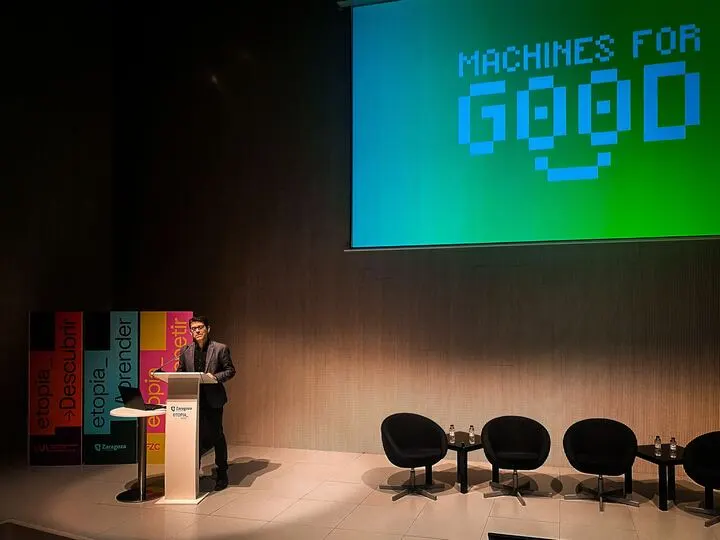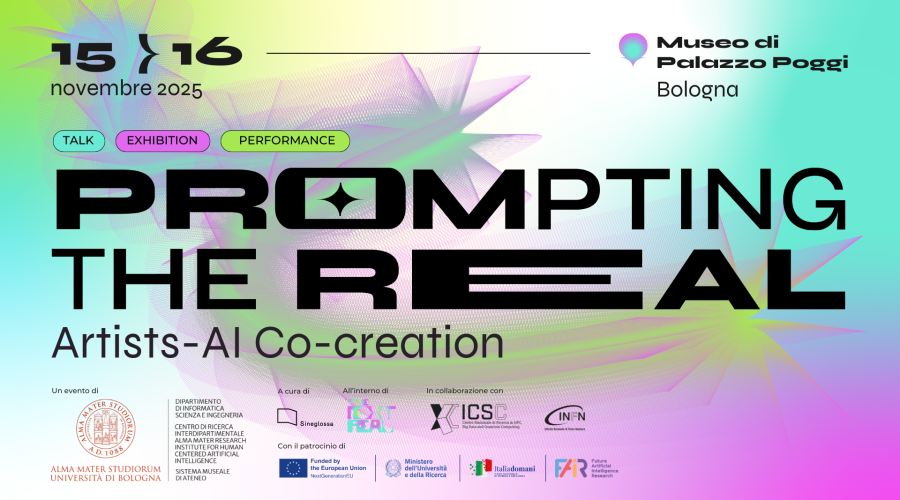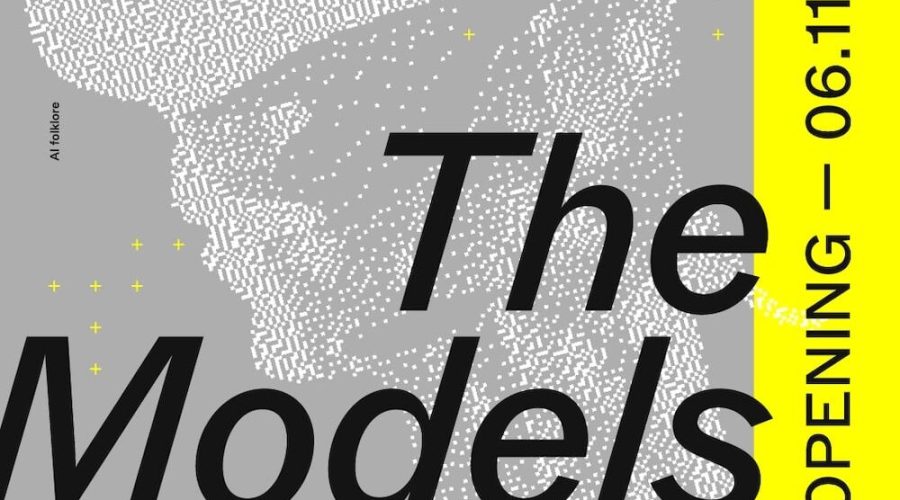In recent decades, artificial intelligence (AI) has revolutionised many aspects of our daily lives, facilitating activities such as travel planning, managing finances and even producing new creative ideas. But what if we could harness AI to improve civic engagement as well? With its data analysis and machine learning capabilities, AI offers unprecedented potential to broaden and strengthen citizen involvement in the democratic process. It could identify and analyse the opinions and concerns of and by citizens, thus generating a more inclusive dialogue and informing policy decisions based on them. Using AI to enhance civic engagement could also help overcome language and cultural barriers, enabling even more people to actively participate in the public debate. However, it is crucial to pay attention to aspects such as transparency, fairness and privacy protection when using AI in this context. How can cultural organisations lead the public discourse around these issues? What challenges emerge from the first cultural projects that set out to do this?
What you find in this news
AI for design future scenarios: The first results of the Machines for Good project
More than 70 per cent of students would like to use artificial intelligence again in education. They agree that AI helps with research, design and imagination. But in order to establish a direct connection between the ability to imagine this function, and the actual realisation of concrete civic actions, we need to expand the spaces for practising and experimenting with these tools at a social and educational level.
Tommaso Sorichetti, user experience designer at Sineglossa, on the impact of the MACHINES FOR GOOD project
Between March and July 2023 in the cities of Eindhoven, Zaragoza, Brussels, Ancona and Vicenza, 560 young people tested artificial intelligence tools to design new desirable scenarios on the topics of the future of cities, active democracy, circular economy and environmental sustainability. The results of the interactive workshops were presented to 30 policy makers from Spain, the Netherlands, Italy and Belgium to develop common guidelines on the use of AI as a tool for civic participation and active citizenship. These activities are part of the European project MACHINES FOR GOOD, coordinated by Sineglossa, in collaboration with Baltan Laboratories (Netherlands), Ohme (Belgium), FZC – Fundacion Zaragoza Ciudad de Conocimiento (Spain), co-funded by the European Union within the CERV programme.


















Artificial intelligence to stimulate a sense of belonging to the neighbourhood
In Eindhoven, the Netherlands, the cultural centre Baltan Laboratories offered the workshop series ‘AI in the Hood I, II’ for 59 people aged between 21 and 70, from different backgrounds but living in the Netherlands. The challenge of the workshops was to stimulate a sense of belonging to the neighbourhood by involving the participants in imagining and designing the urban space where they live or work. The images generated show an increase in green spaces, bicycle lanes and fewer cars or concrete buildings.
How did AI contribute to the challenge?
Through two generative AI tools (Nightcafe for the images and chatGPT for the texts), the participants generated a scenario about the future of the city, collaborating in the elaboration of the prompts, reflecting together on what they would like to keep or change about the present state. Finally, wishes about the future of the city were used on ChatGPT as text prompts to elaborate a recipe for crisp sauce. Overall, the AI technology helped to make the workshop collaborative and fun, and made it easier for the participating people to visualise the ideas by putting them into the real urban context.
What do the participants think?
30% agreed that AI is a collaborative tool; more than 83% agreed that the topic of AI made the workshop interesting and engaging; 62.5% said that the workshop encouraged them to actively participate in shaping the future of their neighbourhood.
Artificial intelligence for food sustainability and against planned obsolescence
In Brussels, partner Ohme collaborated with five organisations (The Barn, Terrorist, KROKET, Ukeepers, Pédalo) by proposing the workshops Thoughts for FOOD and Tools for REPAIR, with a total of 62 participants from 4 different countries of residence (Belgium, France, Italy, Turkey).
The challenge of the workshops was to bring together citizens, experts and partners to explore together artificial intelligence solutions to rethink food sustainability and the concept of reparability (planned obsolescence). The aim was to reduce the gap between large industrial groups and small local actors by sharing new ways of repairing tools based on mutual help and coexistence between citizens.
How did AI contribute to the challenge?
Participants reflected together on both a general and technical level, looking for effective, varied and adaptable AI solutions in line with their values to manage the identification of spare parts needed for repairs (Intelligent Parts Identification), possible future failures (Predictive Maintenance), remote guidance through repair processes (Virtual Repair Assistance), the creation of a centralised repository of repair information (Knowledge Sharing Platforms), the promotion of transparency by providing access to repair data and documentation (The Right to Repair and Compensation).
What did the participating people think?
During the workshops, people discussed ethical issues related to the implementation of AI tools in the field of sustainable food and reparability. The workshop helped demystify the image people had of AI (mostly limited to Chat GPT and Midjourney).
Artificial intelligence for the creative process
In Zaragoza, the cultural centre Etopia in collaboration with Fundacion Zaragoza Ciudad del Conocimiento organised the workshop series “What is a Deep Fake?” and the Cinema at AI Lab for a total of 189 participating Spanish students from different disciplines. Both workshops involved students from 15 to 25 years old in discussing the benefits and fears related to the advancement of AI, addressing the issues of the spread of deep fakes, strategies to recognise them, up to the creation of a group short film by combining AI video editing tools (Voicemod, Cleanupservices, Cap cut) with traditional video making techniques (filming, screenwriting, use of professional video cameras). The result was the video that introduced the final event with policy makers AI for Democracy.
How did AI contribute to the challenge?
AI was both a tool and a topic of discussion. Using Chat GPT, the students constructed a definition of Artificial Intelligence, around which they then discussed. Chat GPT was used to design the question and generative artwork as a stimulus for debate, play and discussion.
What do the participants think?
Most are positive about the topic of artificial intelligence tools, although they express some fears about the rapid development of these technologies. Eighty-four per cent felt that the use of artificial intelligence contributed to their interest in the workshop and 83.9 per cent would discuss AI again. The relocation of the students from the school setting to the exhibition space made the activity more dynamic and facilitated concentration, attention and interaction among the participants.
Artificial intelligence for good sustainability stories
In Ancona and Vicenza, the Sineglossa cultural centre in collaboration with Italia Che Cambia brought the AI and ART for GREEN LEARNING training course to 4 schools, for a total of 154 students. Young people from 14 to 18 years old reflected on the concept of sustainability using a recommender system to investigate various good Italian sustainability practices and a dance performance interpreting these stories.
How did AI contribute to the challenge?
A Recommender System (content filtering system based on artificial intelligence software) was used by the students to explore newspaper articles on good sustainability practices. During the dance performance, people were encouraged to converse with an educated voice chatbot about the same sustainability practices.
What did the participants think?
Most would like to replicate the workshop, positively judging the innovativeness of the tools and methodology (half had never used AI as a teaching tool before). The most practised form of sustainability is attention to the waste of resources. Outside of these environmentally-conscious behaviours, only just over 20% of participants say they regularly engage in civic activism (volunteering, teaching Italian to foreigners, scouting).
The young participants of the CINEMA AND AI workshop, held at ETOPIA Center for Art and Technology in Zaragoza by partner Fundacion Zaragoza, produced this short film using both traditional videomaking and videoediting techniques and experimenting with artificial intelligence tools.
How can AI help policy makers and stakeholders to engage citizens: insights from cultural organizations
Can technologies and artistic practices based on artificial intelligence be used to increase public engagement?
With respect to the complex challenge of engaging the youngest segment of the citizenry, often distant from active participation in cultural and social initiatives, the integration of AI tools and artistic practices in the MACHINES FOR GOOD project’s workshop methodologies has encouraged:
- the active participation of a heterogeneous audience,
- the accessibility of complex topics,
- and creativity.
The combination of technology and creative language, storytelling and artistic expression has proven to be effective in creating immersive and interactive learning experiences, enhancing understanding of concepts and possible applications of AI.
Furthermore, AI tools have made it easier for people to discuss and dialogue about their desires, harnessing the positive emotion of fun that these tools often trigger.
With respect to awareness of the potential risks of artificial intelligence, a widespread sense of enthusiasm and uncertainty has emerged: fears about the rapid development of these technologies relate to the need for new skills and the impact on the labour market.
With respect to the technical ability to use AI tools, there is still a considerable gap between what people would like to do with AI and what AI produces: this is due to the low level of prompt skills and AI literacy that students possess. At the same time, even without too many prompt design skills, the activity of talking to the machine via prompts forced people to think about the meaning of the words used in a prompt. With respect to understanding ethical aspects, the participants were encouraged to think critically about the social impact of AI, to question the ethical dimensions of emerging technologies.
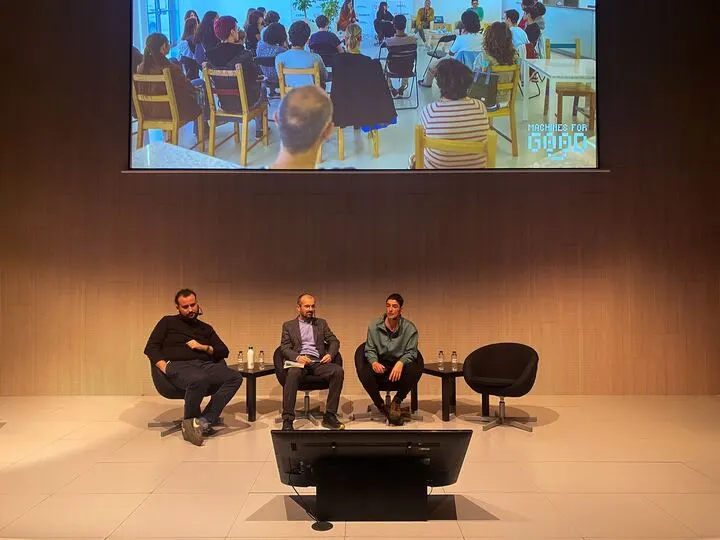
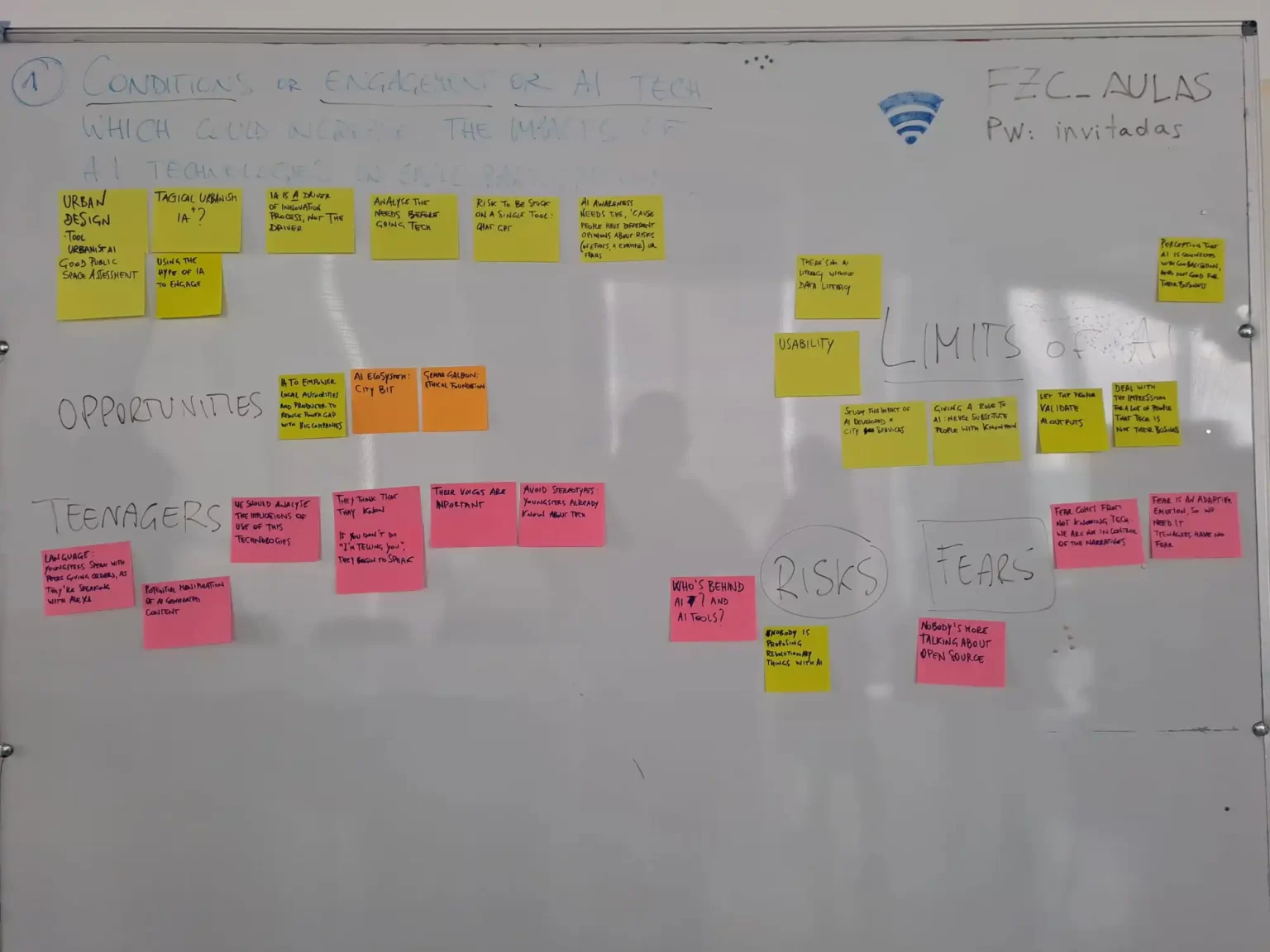

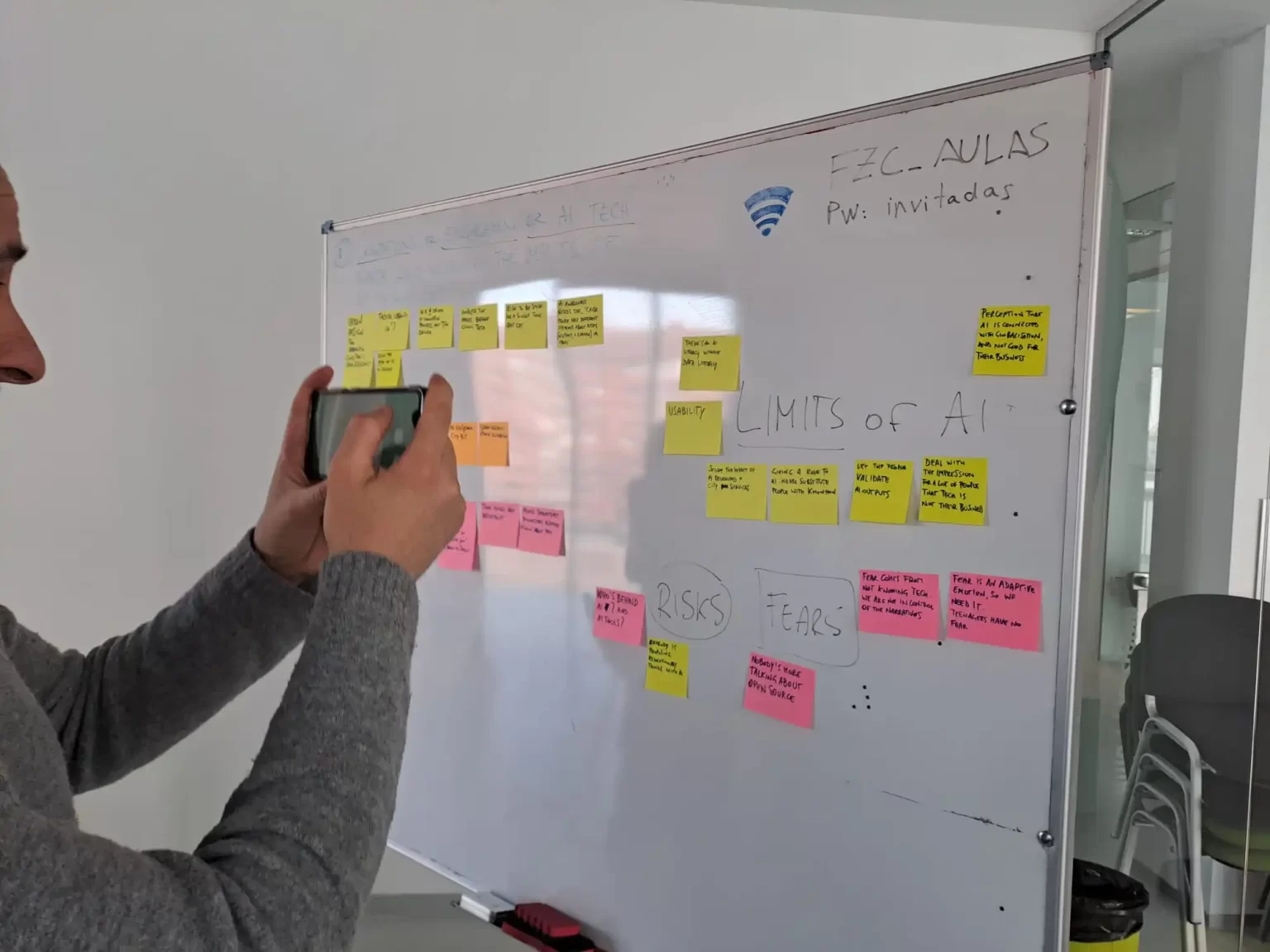

Next project steps
In April 2024 there will be an online conference open to citizens, policy makers, trainers, and cultural workers to present the final outcome of the project: recommendations on how artistic methodologies and artificial intelligence could increase citizen engagement.
